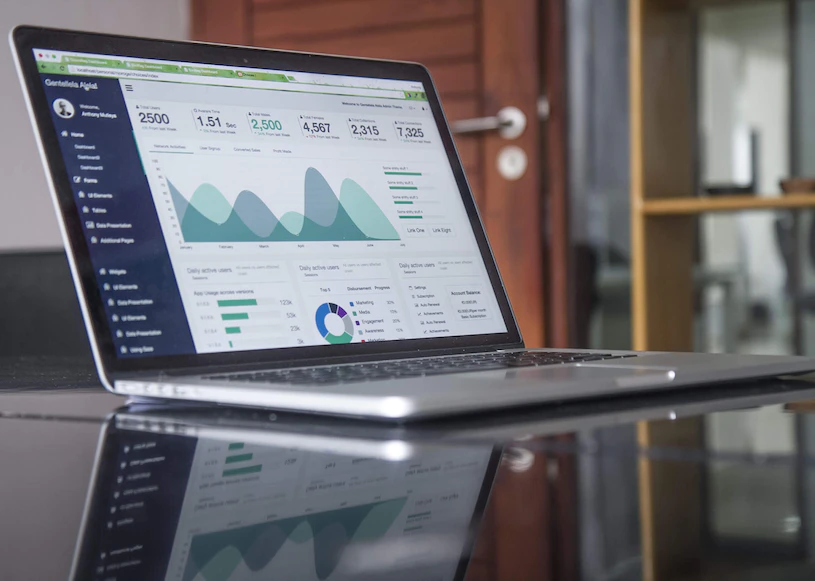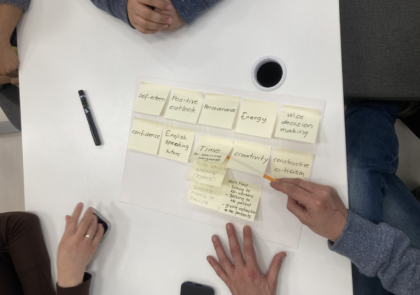
The modern business environment can be demanding. Customer requirements and preferences have become unpredictable and fluctuating. The amount of data generated and consumed grows more rapidly than ever, and decisions are expected to be made swiftly, efficiently, and flexibly. Agile BI tackles these challenges by providing actionable business insights that are delivered with high adaptability and speed. However, agile was originally designed for physically located teams, so now that many teams have shifted to remote or hybrid environments, processes need to be revisited and adjusted accordingly. Successful implementation of agile BI in a modern remote team often begins by selecting adequate tools and technologies to use and automating all possible processes.
Authors: Iina Nurmi & Tarja Keski-Mattinen
Agile BI in remote teams
Agile BI teams aim to create BI reports, BI applications, or BI tools with iterative and incremental deliveries. Agile BI originally asked for frequent in-person communication and co-location to keep the team unified and the workflow effective. However, agile BI teams can also achieve high performance even when working remotely, but it might require additional effort in the process, team and used technologies. (Collier 2011; Comella-Dorda et al. 2020.)
Tools to improve agility, team morale and performance
Creating an effective working environment is crucial when working remotely, but especially when teamwork requires constant communication as in agile. Remote work can often deteriorate team motivation and trust in the project or among team members.
Choosing correct tools begins by determining which agile method or methods are to be applied, how much data will be handled, how often data changes, how often data sources update, and what quality characteristics, such as relevance, accuracy and consistency, the available data possesses.
Project management tools, such as Jira or Asana offer a simplified flow from backlog to reports, visualization of each stage of the project and often integrations to other platforms so that BI applications can be easily amended, stored and shared. It is especially important for remote teams to avoid information silos, so the more information a single platform can contain, the better. (Bishop 2019.)
Remote teams can easily suffer from a lack of spontaneous conversations and overall weakened communication. Collaboration tools, such as Slack or Microsoft Teams, can boost both formal and informal communication among team members by providing options for instant messaging, virtual meetings, file sharing and writing notes. However, ground rules for communication need to be established. Messages should be conveyed as clearly as possible to avoid misinterpretation, informal messages should be left for specific times and spaces, and the volume of messages should be moderate. (Dhawan & Chamorro-Premuzic 2018.) It is also advisable to choose a platform that either allows calendar sharing or has integration to another application with access to team members’ calendars so that scheduling becomes smoother and unnecessary interruptions can be avoided.
Finally, teams can opt for using separate tools for data handling and reporting. Power BI, Tableau or Qlik Sense are some of the most common BI platforms that can be connected to for example Jira. These data visualization tools help to build customizable dashboards in environments that can handle large amounts of data while still being fairly simple to use. They also offer cloud deployments for real-time, collaborative and artificial intelligence-driven editing.
Automation to save time and reduce errors
It is advisable for remote agile BI teams to use cloud-based services when working remotely. Scattering data through cloud, poly cloud, multicloud and hybrid cloud deployments ensures that all employees and stakeholders can access the same data sets in real time, while offering maximum scalability, security and integrity to the company’s data management. (Nurmi 2023.) Seamless access to data can be obtained for example by implementing data fabric or data mesh.
Data fabric and data mesh are both architectures that aim to tackle the complexity of data management by connecting data across multiple technologies and platforms. The main difference between these two is that the purpose of data fabric is to automate all possible processes and serve more as a technology itself, while the purpose of data mesh is to provide decentralized access to groups of people so that they can manage data more effectively. (Gupta 2021; IBM 2023.)
Agile BI teams can also benefit from other intelligent automation, such as artificial intelligence (AI) or robotic process automation (RPA). They can be used to automate core data management tasks, such as data identification, extraction, cataloguing, mapping, routine data entry or cleansing tasks. More sophisticated machine learning technologies are also able to auto-generate insights, create custom alerts and notifications, or conduct testing and eliminate human bias from reports. (Watson et al. 2019; Nurmi 2023.) Working alone in a remote setting often implies decreased communication among team members, so using technologies to send notifications or review work in progress can save time and resources but also improve results and performance.
Making remote agile BI teams successful
Emerging technologies and tools can make agile BI teams excel also in remote environments by automating simple processes and backlog management, offering AI-driven testing, enhancing information sharing and creating interactive BI reports in a proactive way.
Successful tools and technologies selection contributes to goal-oriented agile work as a team and helps to focus on tasks and their progress. The successful selection also affects team members’ satisfaction and helps to build a common working culture and shared norms as an agile BI team. Not to mention the impact of the working environment on building trust, understanding and cohesion between team members. Finally, support members to celebrate successes and milestones.
References
Bishop, D. 2019. Metagility. Managing Agile Development for Competitive Advantage. United States of America: J. Ross Publishing.
Collier, K. 2011. Agile Analytics: A Value-Driven Approach to Business Intelligence and Data Warehousing. Agile Software Development Series. Cited on 20 November 2022. Limited availability at https://www.proquest.com/docview/875616202?accountid=202350&parentSessionId=fEkGaH%2B7qj5TX2dboTMomI%2FD30E0l7Zd124MNntRCrQ%3D&pq-origsite=primo
Comella-Dorda, S., Garg. L, Thareja, S. & Vasquez-McCall, B. 2020. Revisiting agile teams after an abrupt shift to remote. McKinsey & Company. Cited on 4 May 2023. Available at https://www.mckinsey.com/capabilities/people-and-organizational-performance/our-insights/revisiting-agile-teams-after-an-abrupt-shift-to-remote#/
Dwahan, E. & Chamorro-Premuzic, T. 2018. How to Collaborate Effectively If Your Team Is Remote. Harvard Business Review. Retrieved on 10 May 2023. Available at https://hbr.org/2018/02/how-to-collaborate-effectively-if-your-team-is-remote
Gupta, A. 2021. Data Fabric Architecture is Key to Modernizing Data Management and Integration. Cited on 10 May 2023. Available at https://www.gartner.com/smarterwithgartner/data-fabric-architecture-is-key-to-modernizing-data-management-and-integration
IBM 2023. What is a data mesh? Cited on 10 May 2023. Available at https://www.ibm.com/topics/data-mesh
Nurmi, I. 2023. Successful Implementation of Agile Business Intelligence in Remote Teams. Bachelor’s thesis. LAB University of Applied Sciences, Faculty of Business and Hospitality Management. Cited on 31 May 2023. Available at https://urn.fi/URN:NBN:fi:amk-202305109204
Watson, J., Hatfield, S., Wright, D., Howard, M., Witherick, D., Coe, L., Horton, R. 2019. Automation with intelligence. Retrieved on 10 May 2023. Available at https://www2.deloitte.com/content/dam/Deloitte/tw/Documents/strategy/tw-Automation-with-intelligence.pdf
Authors
Iina Nurmi is a graduating student of Business Information Technology in LAB University of Applied Sciences and works as a Data Management Specialist at POWER International AS.
Tarja Keski-Mattinen is a Senior Lecturer of Business Information Technology at LAB University of Applied Sciences and an expert at the LAB CX Group.
Illustration: https://unsplash.com/photos/hpjSkU2UYSU (Unsplash License)
Published 8.6.2023
Reference to this article
Nurmi, I. & Keski-Mattinen, T. 2023. Tools and technologies to employ agile BI successfully in remote teams. LAB Pro. Cited and date of citation. https://www.labopen.fi/en/lab-pro/tools-and-technologies-to-employ-agile-bi-successfully-in-remote-teams/






